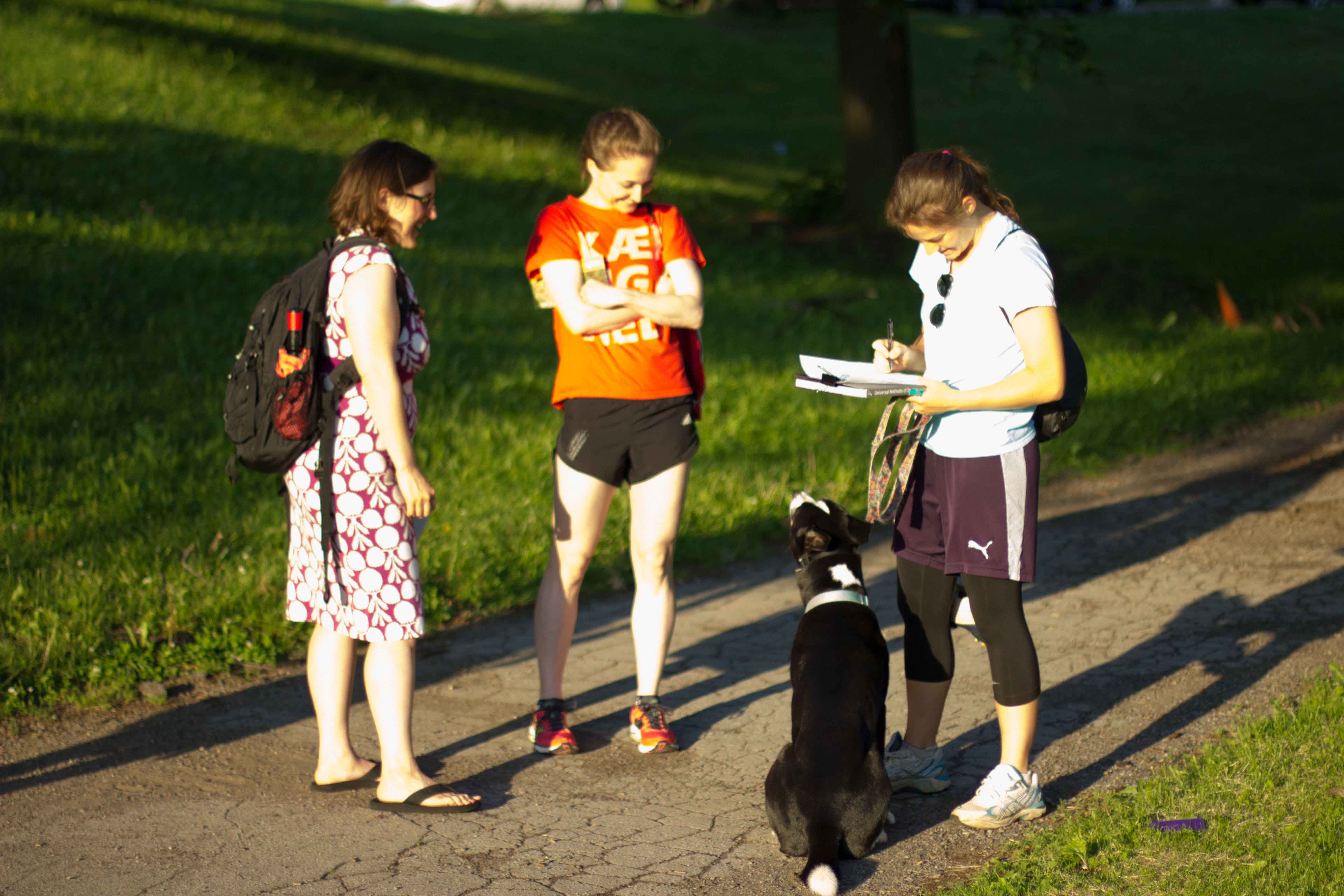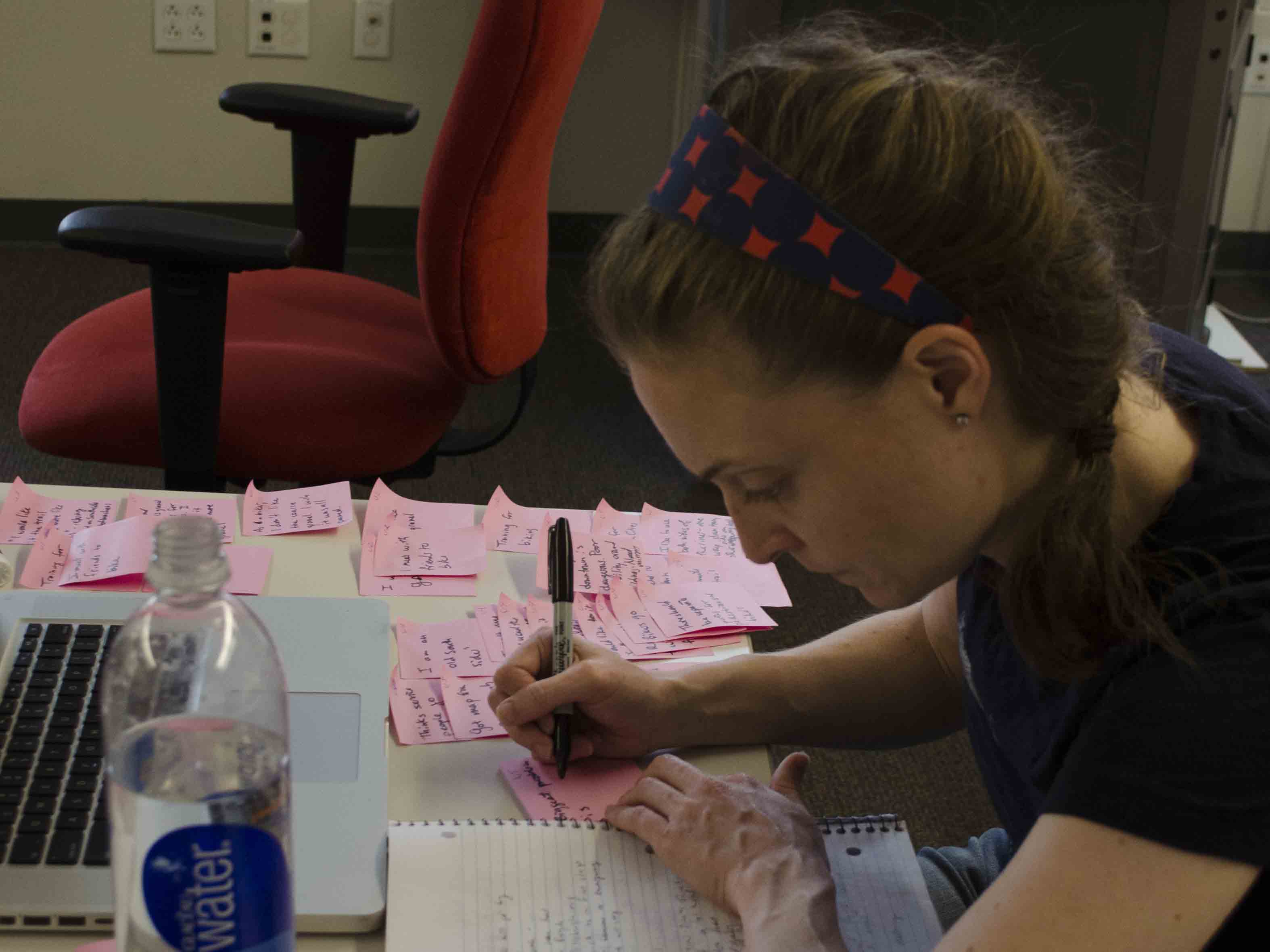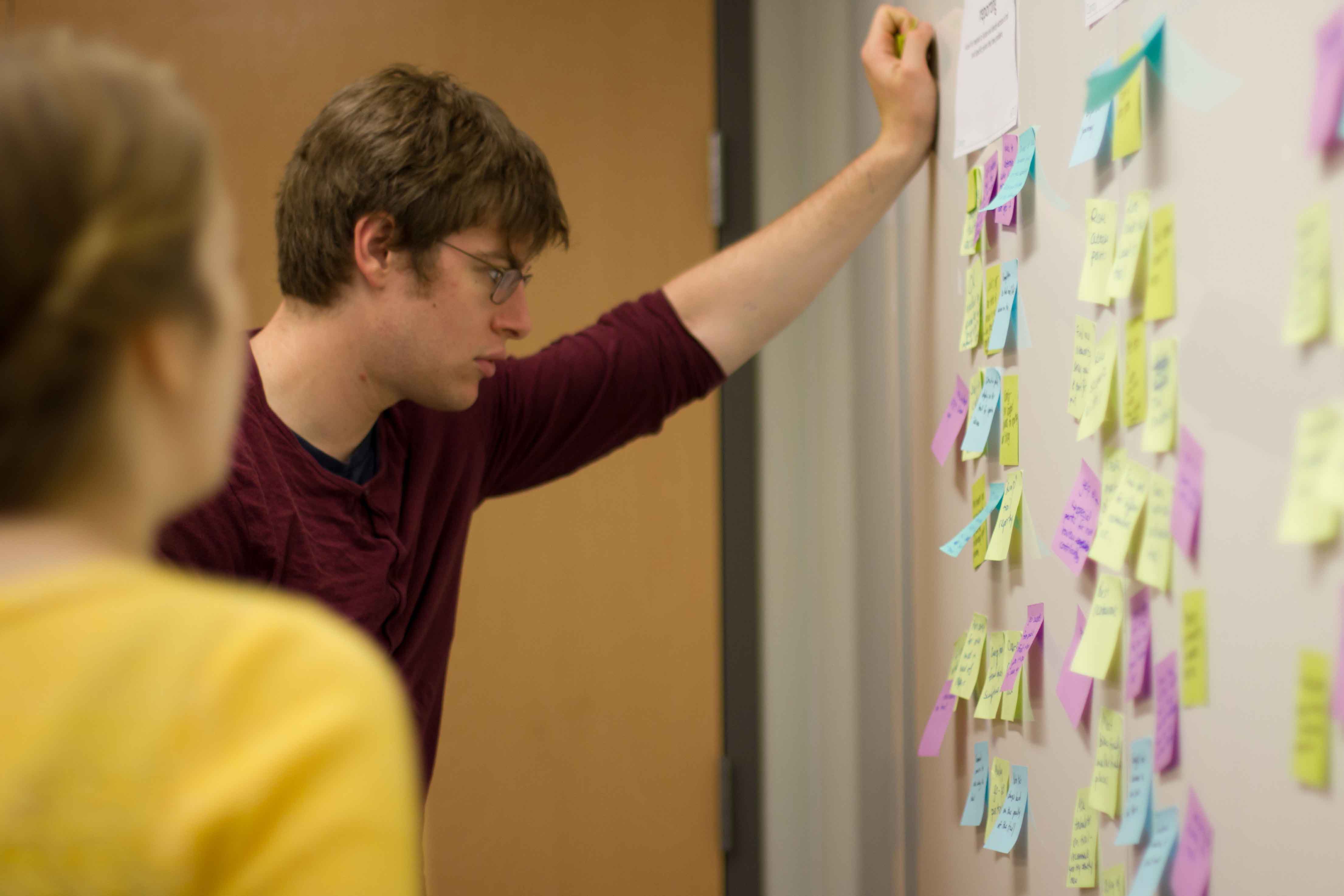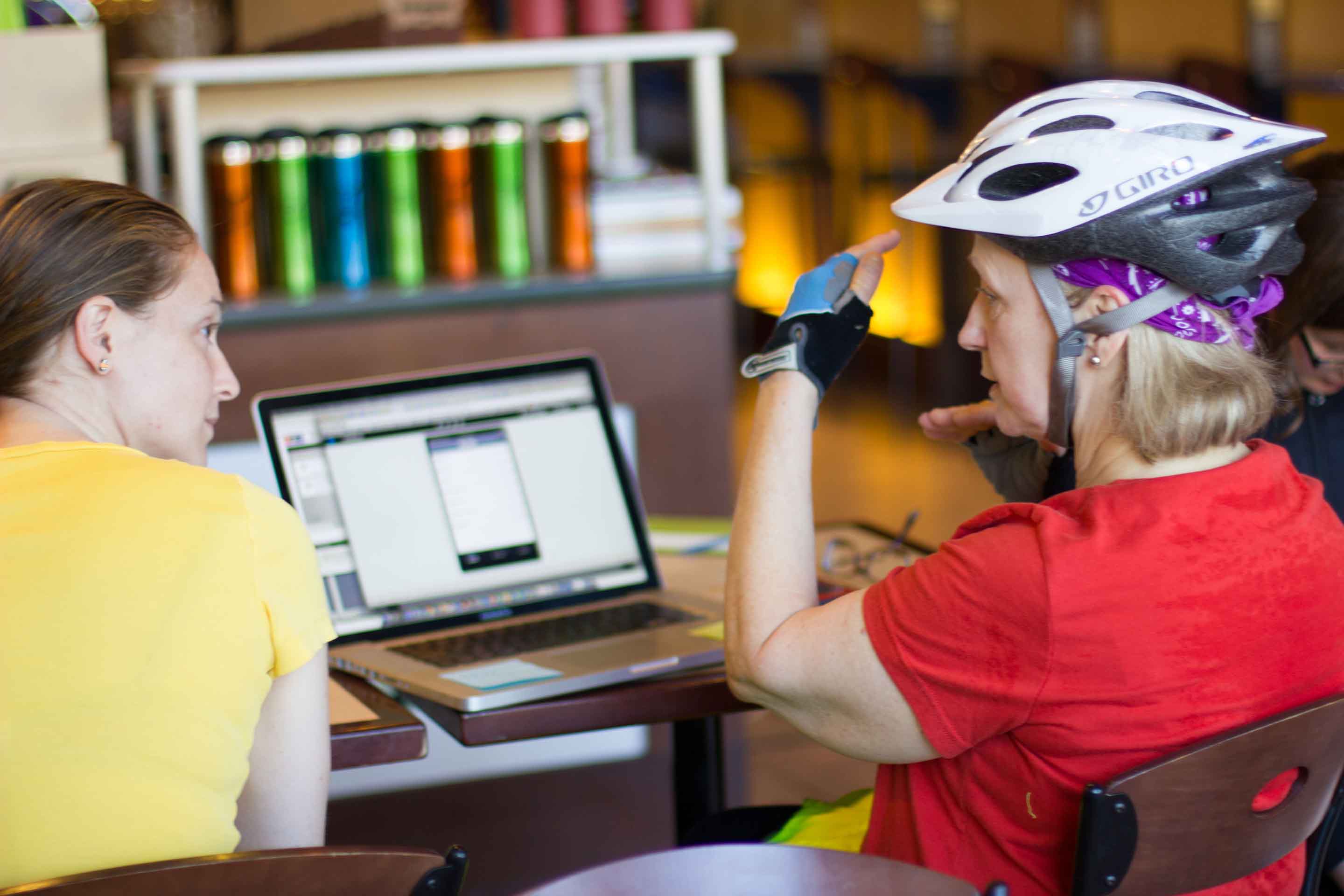trail mix
Engaging trail users by mixing their experiences
LEARN MOREMY ROLE & CONTRIBUTION
DELIVERABLES



Stephanie (left) and I (center) interviewed many types of people on the trail like commuters, exercise enthusiasts, and pet owners.

I had to transfer my notes captured in the field for affinitying.

We discussed our research findings with Friends of the Riverfront Project Manager, Sam Thomas, and then brainstormed solutions together.

This biker was one of frequent trail users who participated in usability testing. She told me that the trail can be tricky to navigate due to poor signage and our application woud help trail-goers communicate about what they know.